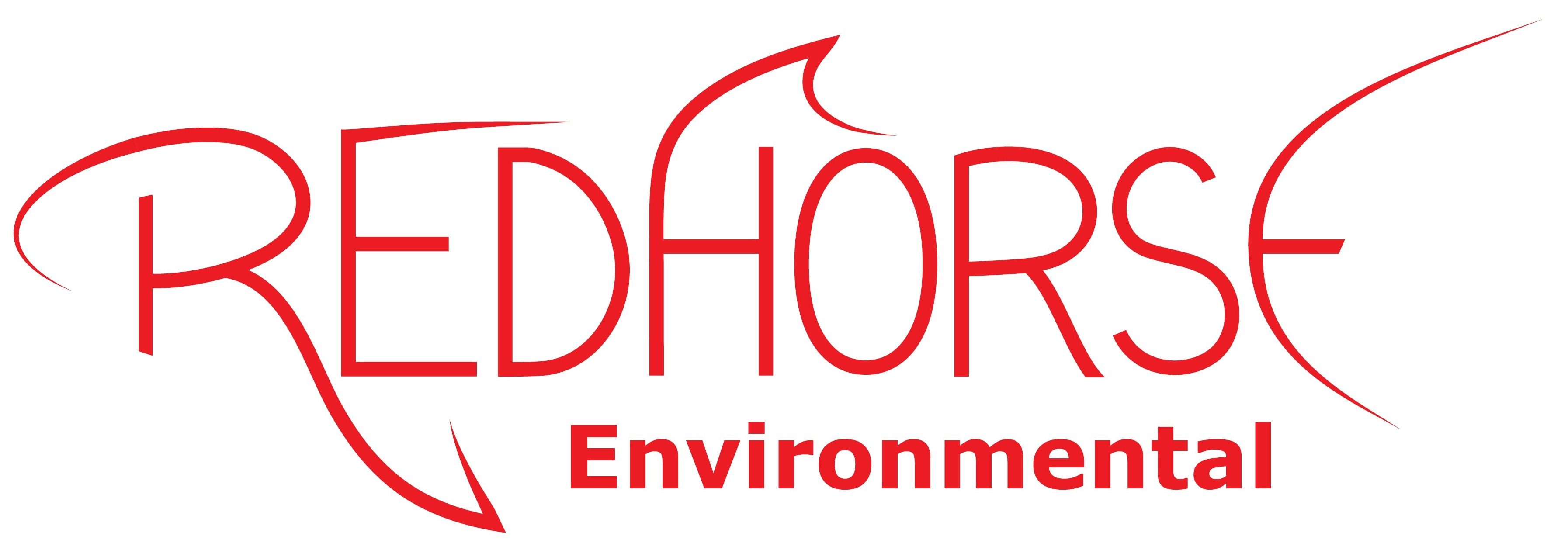So far, we’ve resolved questions associated with locating a plot after assessing the site’s ecological resource base and making sure the food plot will not benefit your neighbors or trespassers. Considerations can now be focused on plot size, plot shape, plot preparation and seeding, and plot maintenance. All of these are interrelated but need to be examined independently.
PLOT SIZE
Food plot size can be quite variable and often follows site specific characteristics and conditions. If the area available for a plot is limited to an existing opening you’re likely limited to the dimensions of that site. Alternatively, abandoned fields or pastures can be great food plot locations and can be relatively large or even subdivided into smaller, complimentary plots. I break plots into three basic categories including microplots, small plots, and large plots.
Plot size will drive many variables associated with plot planning. In general, microplots and small plots require less site preparation (clearing or mowing, spraying, tillage), fewer amendments (lime, nutrients, seed) and less potential maintenance. For new plotters smaller is often better as the process is more manageable and more likely to succeed. Starting out small can provide land managers the basic training and experience needed to later develop larger or more complex plots.
Microplots can be completed with hand tools (rakes, shovels, hand seeders, chainsaws, etc.) without significant use of equipment. As plot size increases to small plots equipment can be utilized for spraying and tillage operations and reducing hand labor. Equipment specifically designed for use with ATVs and UTVs for the food plot market are now available from many sources and includes tillage tools, rakes, sprayers, spreaders, seeders, drills, compactors, and mowers. Many of these small-scale implements are inexpensive and allow managers to locate small plots in areas with limited access or situations where labor is limited. Smaller plots are particularly well suited for small game and non-game species/pollinators where they can be mixed into adjacent habitats easily.
Larger plots typically require the utilization of large-scale agricultural equipment. Site prep and planting can be efficiently completed with agricultural equipment used on commercial cropping operations. Land managers that have enough space to plant large plots typically do not own ag equipment. They may have the option to rent equipment or contract preparation and planting work with neighboring farmers or with food plot specialists. Cost per acre in larger plots can be quite low when compared to smaller plots but the total investment to plant large acreage will be considerably higher.
Microplots and small plots, while less expensive that larger plots, are subject to several specific problems. I have seen many small plots destroyed following the seeding stage by non-target species, often requiring repeated planting. Additionally, if they do succeed smaller plots may not provide food for long periods as they can be consumed quickly if target species numbers (i.e., deer) are locally high or if non-target species consume them (i.e., woodchucks, geese). If the latter occurs hunting over those plots may never occur. One strategy for microplots and small plots to counter overuse is by creating many plots thereby spreading feeding pressure over more acres.
PLOT SHAPE
Plot shape may be low on your list of considerations in food plot planning, but it can be important. An accepted concept in conservation and wildlife management regarding habitat improvement is that creating edge is generally positive. Edge increases when food plots are irregular rather than geometric in shape with higher edge-to-interior ratios. What is known about edge effect in the greater context of wildlife management may not be that relevant to your food plots. Creating abundant edge against other habitats can be especially important for small game food plots but may not be as important for larger game like deer.
Plot shape will exert an effect on how you prepare, plant, and maintain a food plot. Irregular shaped plots are more difficult to create with larger equipment. For those of you that have looked at nearby farm fields in your neighborhood they are often rectangular in shape. Geometrically shaped fields minimize turning at field ends and maximizes trip length during mowing, spraying, tillage, planting, and harvesting operations supporting production efficiency. This does not mean that irregular shaped plots can’t be created with larger ag equipment. I plant lots of plots that are irregular in shape with tractors and associated implements. Irregular plots require more turning, more trips, and more time to complete. My experience with no-till drilling food plots is that at 3 mph I can plant about 1 acre in an hour with my Great Plains 606NT if my plots are rectangular and I don’t spend a lot of time turning my equipment at field ends. If they are irregular, they often require 1.5 to 2 hours per acre to plant because of backing, turning, and short runs. This is especially true if those plots are in wooded areas where overhanging branches and tree roots slow the process.
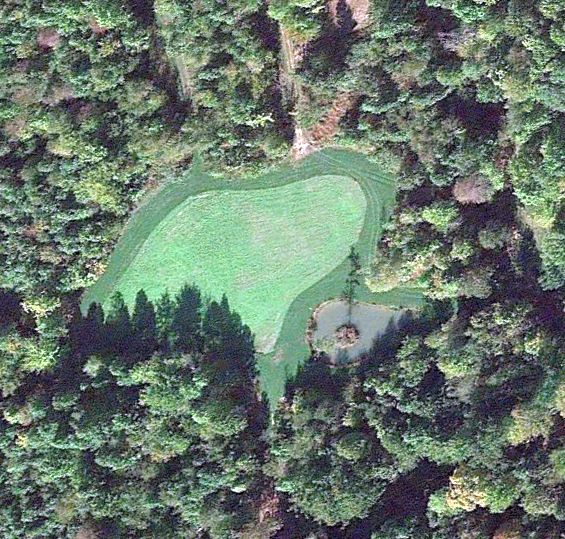
Small Interior Food Plot 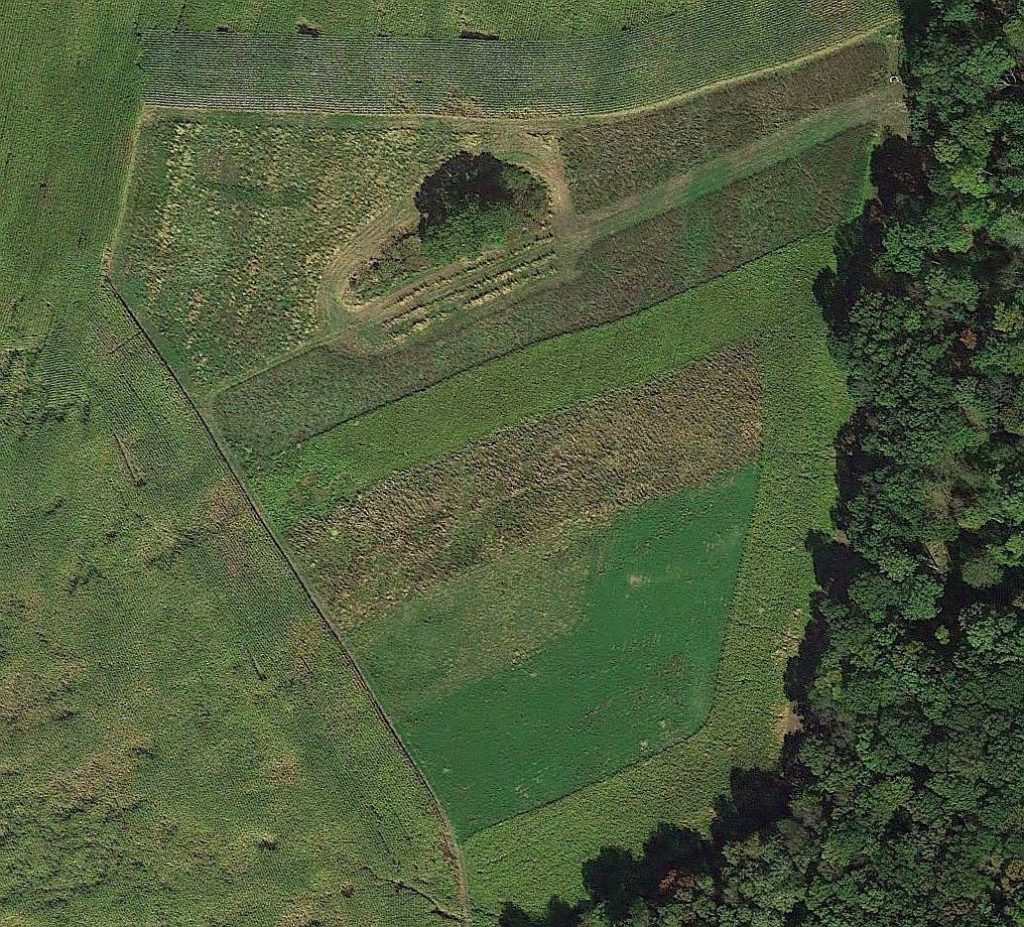
Large Multi-crop Food Plots
PLOT PREPARATION
Various options come into play when preparing your site. Clearing existing vegetation is generally first on the list of operations. This can include removing trees, brush, successional regrowth, or last year’s crops. How that is accomplished can range from using forest clearing equipment (i.e., skid steers with forestry heads or bull dozers), spraying or mowing with ag equipment, hand operated equipment (backpack sprayers, chainsaws, gas powered weed cutters), or even controlled burning.
Once the site is cleared plotters need to prepare for planting. This can involve tillage with small equipment or larger ag implements. The goal of soil tillage is to create a viable seed bed. Once this is achieved seeding can occur. If no-till is the preferred planting method actively growing sites are typically mowed, allowed to briefly regrow, and then sprayed with herbicides. Once existing vegetation is killed no-till drilling can occur.
Soil characteristics and quality also needs to be investigated. Food plots need to be able to provide the necessary resources and conditions plants need for adequate growth and maturation. Soil pH most be within an acceptable range for plant growth and support. Neutral soils (i.e., pH ~ 7) are more capable of making the primary soil nutrients needed for plant growth available. The primary nutrients recognized in commercial agriculture for plant production – nitrogen, phosphorous, and potassium – are also needed for a successful food plot. Micronutrients and trace minerals can also be important in some situations.
To understand the condition of the soil in your food plot take a composite soil sample each year and have that sample analyzed. Depending on the crop(s) you plan to grow recommendations for soil amendments will vary. Some crops can grow in lower pH soils with lower fertility levels. Other crops, like corn, are heavy feeders and require significant inputs of fertilizers to be productive. Changing deficient soil pH and inadequate nutrients levels can be overcome with lime, commercial fertilizers, organic fertilizers, manure/compost, and through cropping systems based on multi-species rotations. The path that you follow is often based on personal preferences or can be driven by convenience or cost considerations.
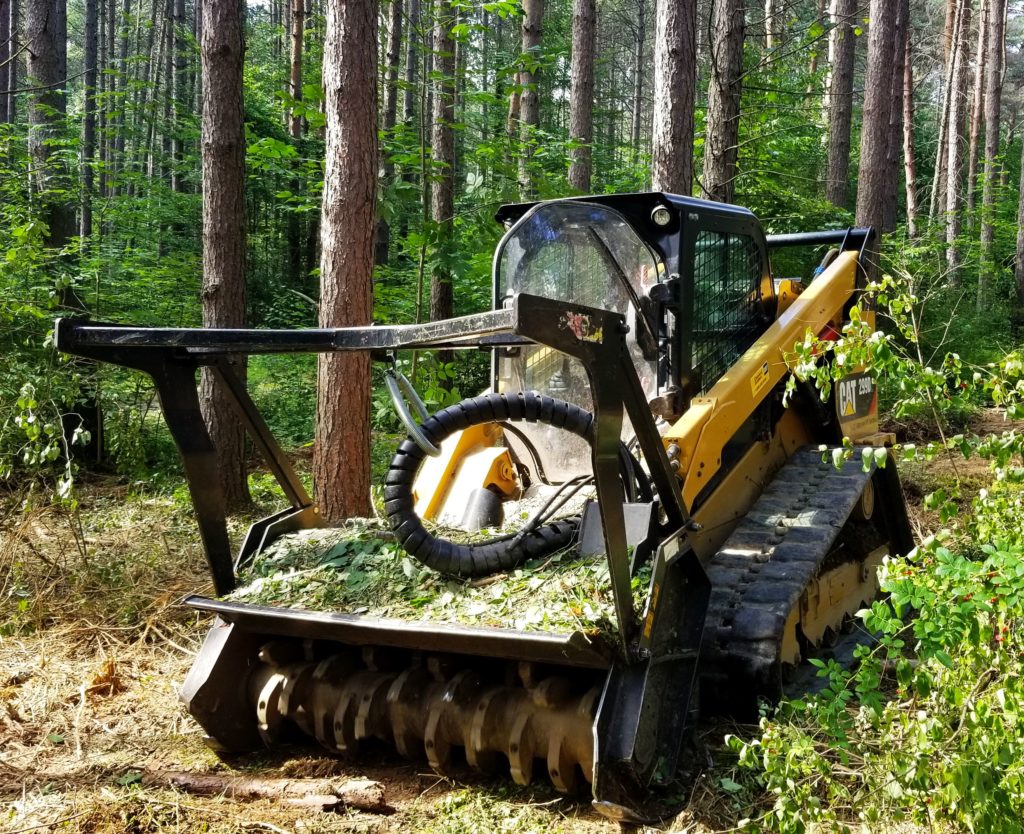
Forestry Head on Skidsteer 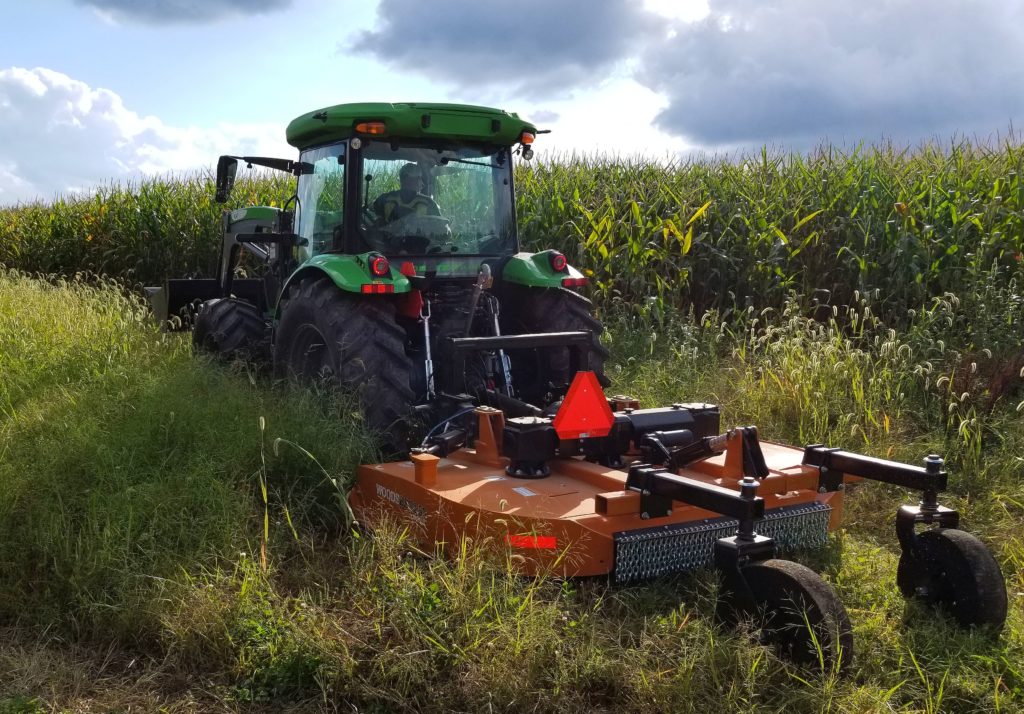
Mowing 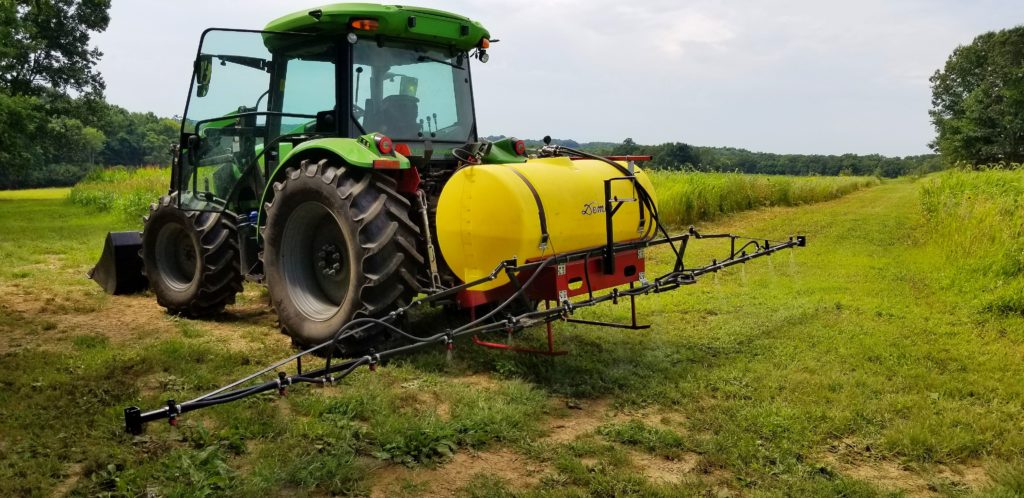
Sprayer
SEEDING
Once you have your plot ready for planting you need to decide on the crop you are going to plant and how and when you will do that. Timing is critical in food plot plantings.
Some crops can be seeded very early in late winter and early spring by frost seeding. Small-seeded cool-season perennial crops like clovers, birds-foot trefoil, and alfalfa can be directly seeded onto exposed soils when the ground is frozen with hand operated seeders. Repeated freezing and thawing incorporates the seed into the soil where it can then germinate. Other cool season annual crops also do well when frost seeded including oats and winter grains. This approach is a very easy and effective seeding method for small clover plots that are designed to last several years.
Seed germination varies by crop so matching the crop with an accepted planting “window” is important. These planting windows reflect soil temperature. Early season crops like oats can be planted during cool spring weather because they will germinate readily in cold soils. An additional benefit of early plantings is that rapid crop establishment and growth can outcompete weeds producing higher quality plots.
Warm season annuals require higher soil temperature for germination, so they are typically planted later in spring or into early summer. Timing is critical because it influences plant emergence and ultimately yield. Having a soil thermometer is a great way to best time your plantings. Crop specific planting times for your area can be found in extension circulars or agronomy guides.
Where I live in northwest Pennsylvania our planting times are considerably later than areas in southern or eastern Pennsylvania. For a planting germination timing example let’s look at growing corn. According to the Penn State Agronomy Guide corn planting dates here in Venango County (Maturity Zone 1) are from May 15 to May 25 for corn varieties maturing in 90 – 100 days. At planting, soil temperatures should be > 50° F and soils should not be excessively wet for good corn germination.
Seeding larger areas often requires a more sophisticated approach to equipment. For areas approaching one-half acre or more consider mechanically driven spreaders or seed drills. Alternatively, I use a no-till drill to plant everything in my plots including corn and pumpkins. For those working on tilled areas conventional grain drills work well.
In my corn food plots I plant short season hybrids with my Great plains no-till drill on 15” rows. I choose hybrids that mature in 80 – 86 days because I want to be sure my plots are not killed by a late spring frost or an early fall freeze. I’ve observed below freezing temperatures on more than a few occasions in both June and September on my farm. Short season hybrids give me options – a later planting date and a very high probability that my corn will be mature and drying down for September hunting seasons.
This example for planting corn should provide some insight into seeding food plots. Plotters need to pay attention to the various requirements of what they plant, and the maturity characteristics of those crops. Plant when soils are cold and germination may suffer or completely fail. Plant to late and your plot may grow well but not yield much food for the species you target.
You need to consider timing for fall/winter plots as well. Brassicas and winter grains for fall seasons need to be planted at the correct time in late summer so that those crops put on enough growth by hunting season and for post season utilization.
Lastly, a benefit of varied seeding times is that it allows plotters to spread out their management activities over several months. Trying to plant all your plots at one time can be hectic.
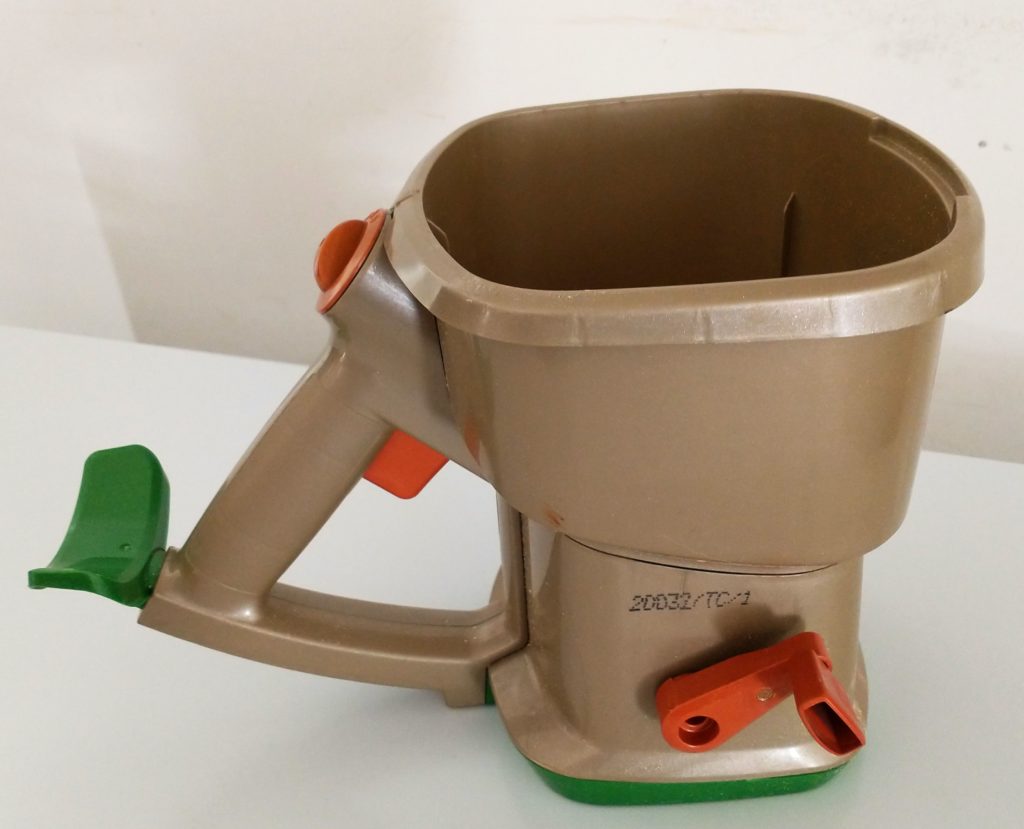
Small Capacity Hand Seeder 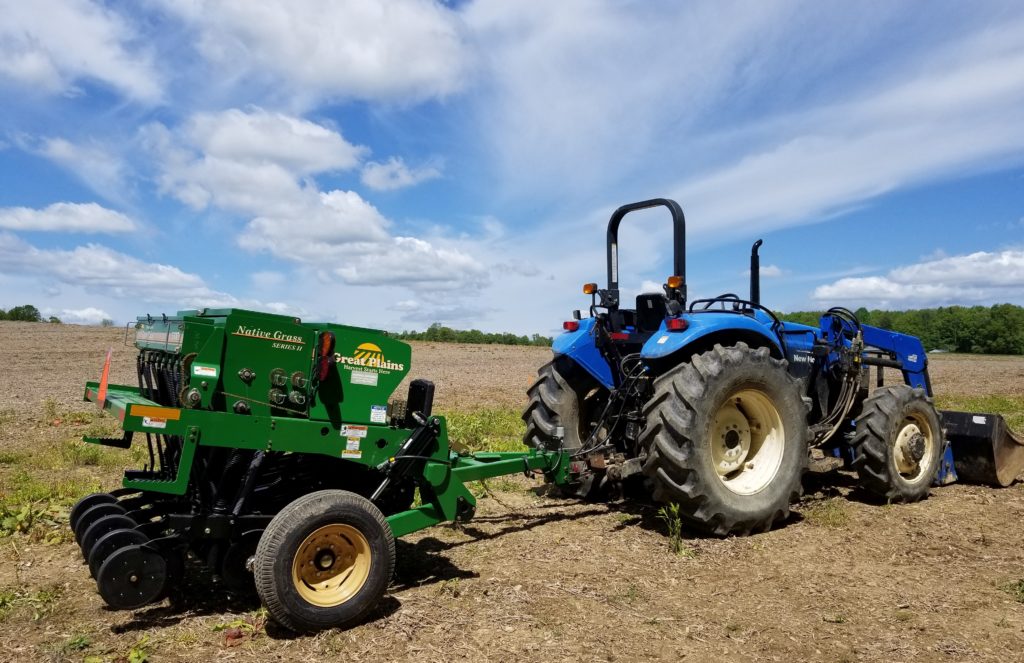
Tractor with GP 606NT No-Till Drill
PLOT MAINTENANCE
Once you have a plot planted it needs to be monitored. Assess germination and plant growth for the first couple weeks. If germination is poor, you may need to reseed the entire plot. Microplots and small plots can be wrecked before or during germination, especially in isolated locations. If your plots fail multiple times you obviously need to modify your approach.
If weed pressure becomes excessive spraying or cultivating your plots may be necessary. Many seed companies offer glyphosate-resistant crops like corn and soybeans that are genetically altered to tolerate specific herbicides. Some herbicides are non-selective while others are classified as selective and control specific weeds types (i.e., grasses or broadleaf weeds). If you are going to use herbicides you need to know the plant(s) you want to control and the specific herbicides that control those weeds. One downside of depending on herbicides for weed control is that they limit your ability to plant multi-crop plots. Another is that some weeds have developed herbicide resistance and may not be easily controlled with herbicides.
In clover plots or other perennial stands periodic mowing may be an option to address weed issues. How and when mowing is utilized is critical to successful weed control. For example, I mow clover plots at a height to control perennial weeds (typically ~ 12” in Ladino clover; higher in red clovers) while cutting as little of the clover as possible and I only do this when weed pressure warrants it. Additionally, I try to avoid mowing when clovers are in full flower and being heavily utilized by pollinators and during periods of drought.
After crops are up and growing in your plots you may also need to provide supplemental fertilization. During extended wet periods following spring planting nitrogen can be lost from soils by leaching and plant growth can be drastically reduced. Adding supplemental fertilizer (spraying liquid fertilizer, side dressing, broadcasting slow-release nitrogen) can often save a plot that is weak form complete failure.
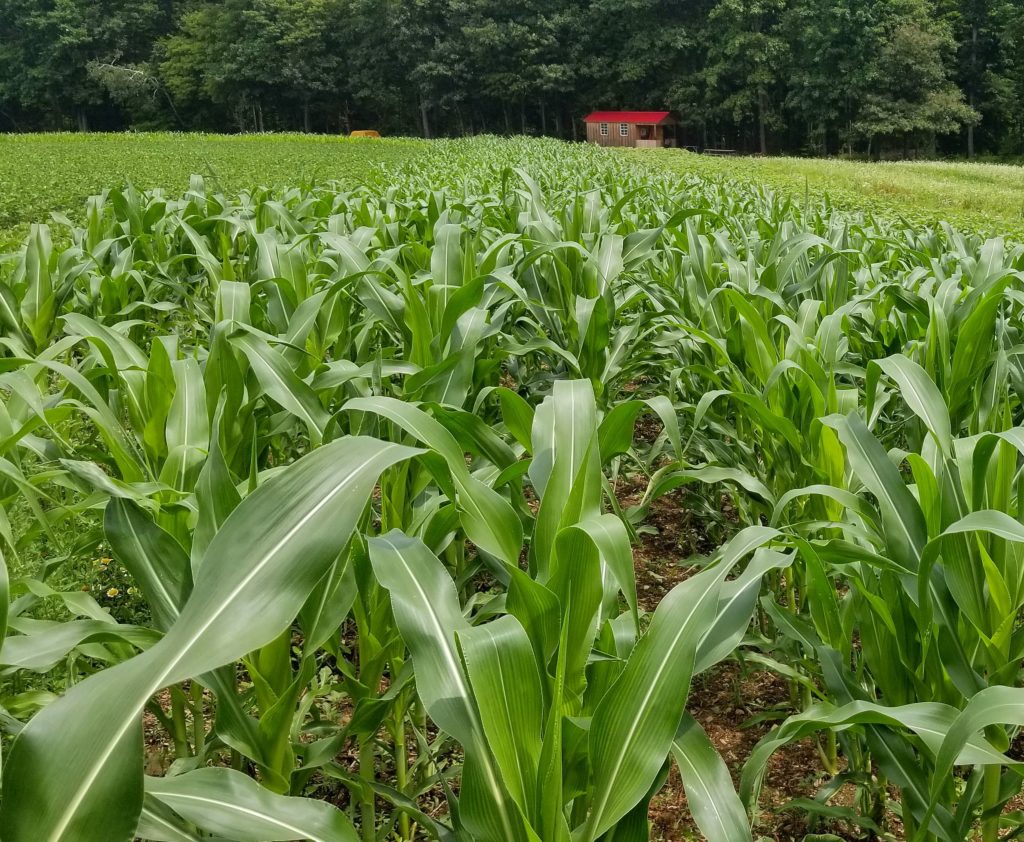
GP 606NT Drilled Field Corn on 15″ Rows 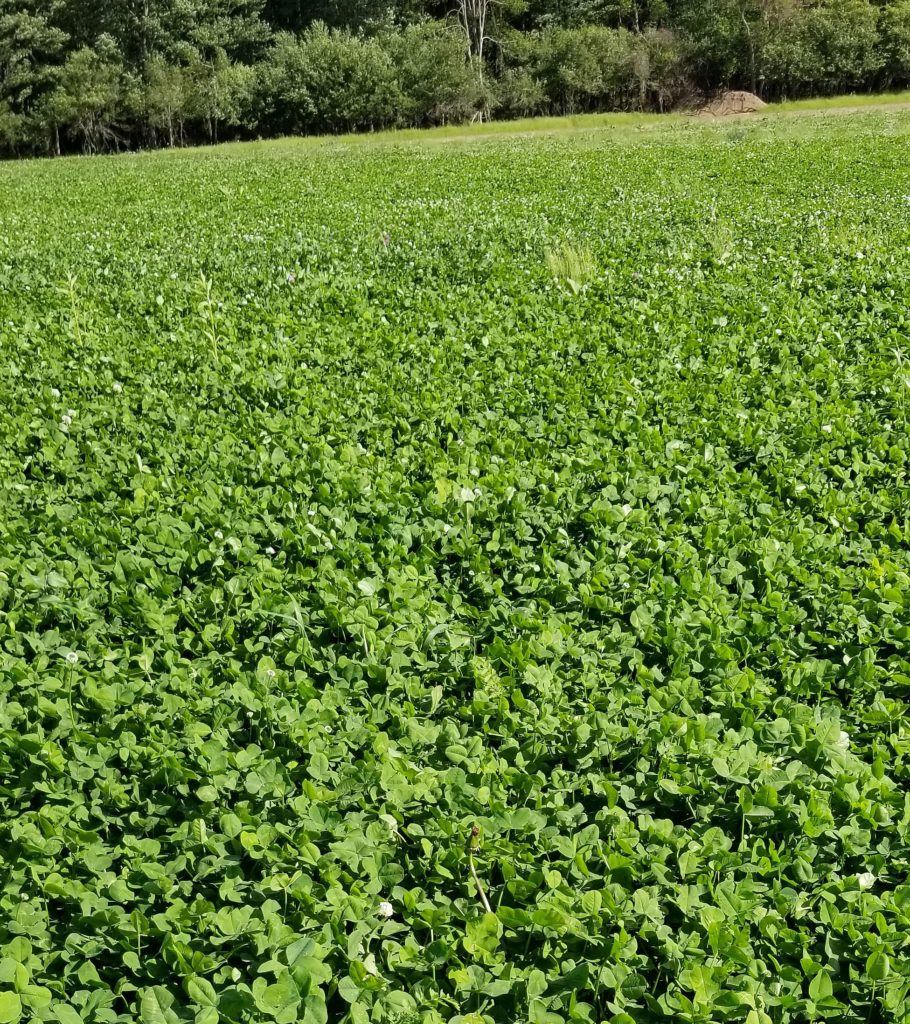
2nd Year Ladino Clover Stand 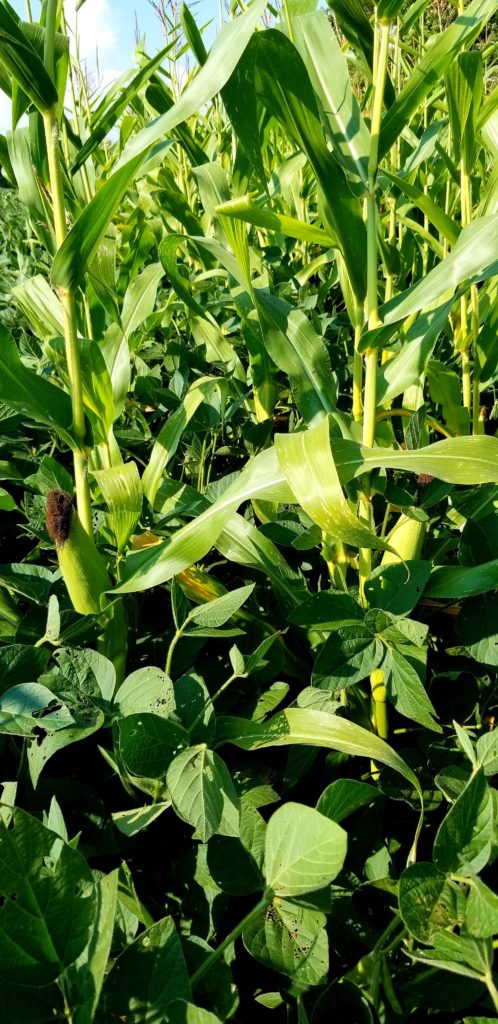
Interplanted Corn and Soybeans
SUMMARY
Food plot size, shape, and crop depends on many factors that you need to assess for your property and specific food plot goals. My planning each year depends on how I want to manage specific areas of my property within the context of what had been done there in the past. The type of food plots I plant (small game, big game, songbirds/pollinators) changes from year to year based on my existing multiyear rotations, prior crops, weather conditions, and what is being planted on neighboring farms in the neighborhood. Sometimes my plans change just because the crop seed I wanted was not available.
Lastly, when considering what to plant, I believe rotating crops in food plots is essential to maintaining healthy plots that have good disease and pest resistance. I also prefer planting diverse polycultures containing nitrogen fixers when possible as this promotes soil health, supports multiple species groups (game, non-game, pollinators) and reduces the risk of complete plot failure if one crop does poorly.
How I approach food plots may be rather complex for beginning plotters, but I’ve been experimenting for 30 years. By starting with relatively easy to grow crops on small acreage new plotters can gain the knowledge and experience to develop more complex food plots over time and eventually expand the number of plots on their hunting property. It all pays off in the end. High quality feed produces healthy animals.
